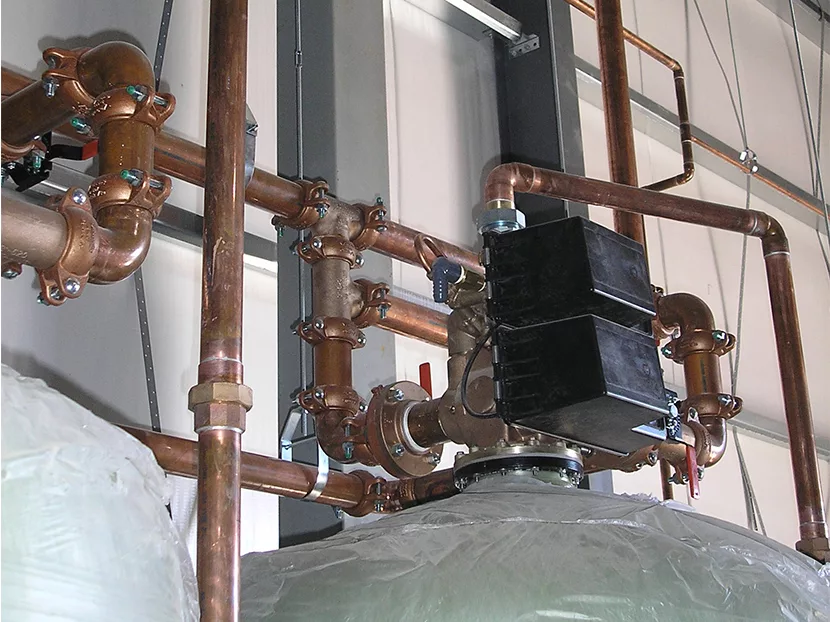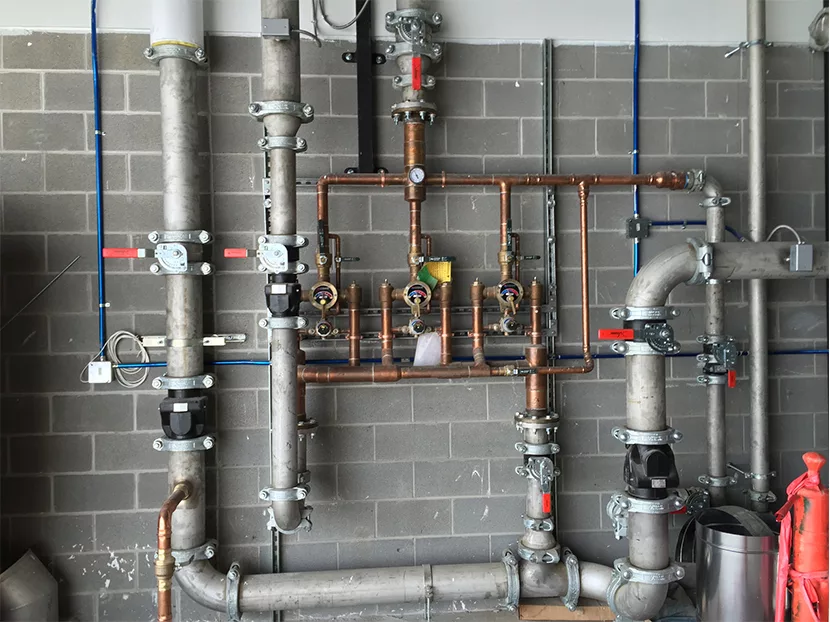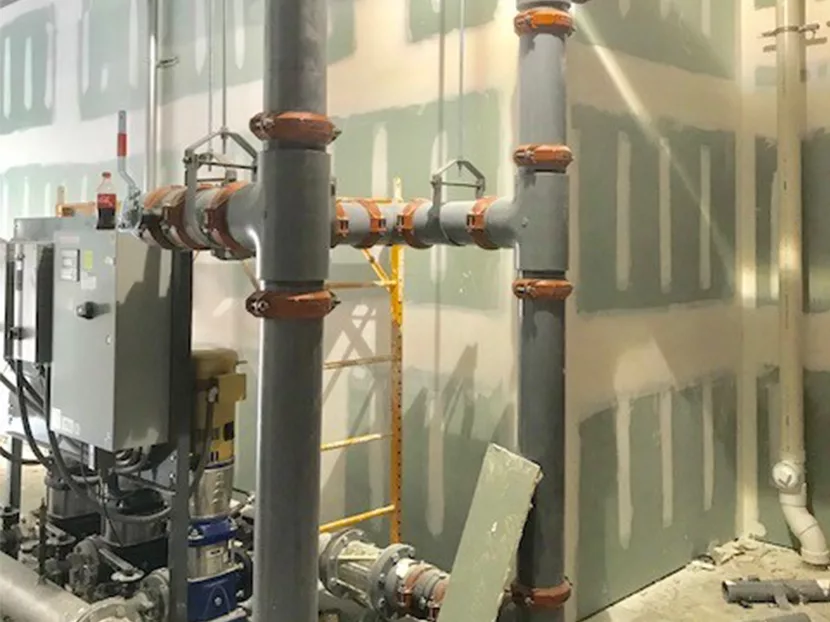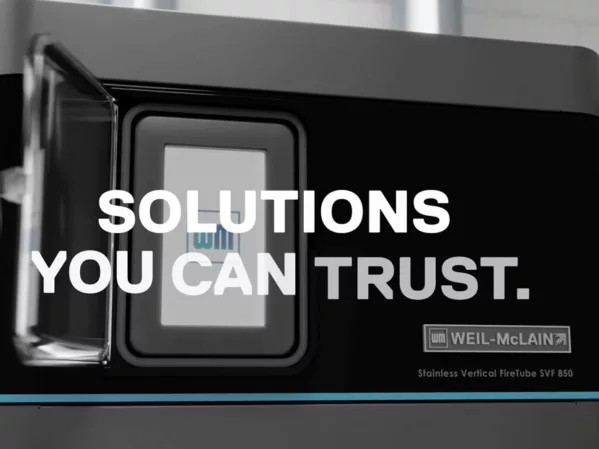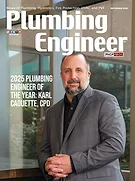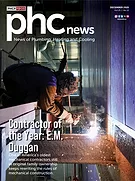Over the years, potable water piping systems have been constructed using a wide range of materials, each of which exhibits specific performance characteristics and limitations. Materials range from the most traditional — galvanized carbon steel, copper and stainless steel — to non-metallic polyvinyl chloride (PVC) and chlorinated polyvinyl chloride (CPVC), cross-linked polyethylene (PEX), random copolymerized polypropylene (PP-R) and high-density polyethylene (HDPE).
All these materials have limitations. As it relates to metallic options, galvanized carbon steel can react with minerals in hot potable water systems, resulting in scale buildup, reduced flow area and pin holes through the pipe wall. Copper is vulnerable to erosion corrosion under high flow rates, which can remove the protective oxide layer. And some grades of stainless steel are susceptible to chloride corrosion if the concentration of chlorides in the water is high or if welds are not properly passivated.
Despite these shortcomings, metallic piping has been the industry preference for years, with copper being the material of choice for potable water piping lines up to 2.5 inches in diameter, while galvanized and stainless steel are preferred for larger sizes.
Although plastic pipe has been around for decades — especially in the residential sector — and exhibits characteristics that make it suitable for potable water systems, the commercial plumbing industry has remained generally inclined to use metallic piping materials. But now it is becoming more popular to evaluate the use of plastic pipe versus metallic pipe.
Considering CPVC
In recent years, CPVC pipe is being considered more frequently for potable water systems. Characteristics such as its light weight nature, inherent corrosion resistance and unimpeded flow due to a lack of corrosion have contributed to its adoption.
In the U.S., the greatest acceptance of CPVC has been in the Southeast and West Coast regions, where corrosion is a prevailing concern. Those regions have become early adopters, and successful applications have led to broader use.
An additional advantage of CPVC pipe is cost. Market volatility affects the price of stainless steel and copper, which means material expenses can fluctuate. The more consistent pricing of CPVC allows contractors to be more confident in their bids. Even when stainless steel and copper prices are low, CPVC pipe can be a competitive option.
Similar to other pipe options, CPVC has some limitations. For example, its high coefficient of thermal expansion must be accommodated by integrating expansion loops and/or joints to ensure the pipe is not overstressed. The potential for environmental stress cracking, a synergistic effect of chemical attack and stress, requires all materials in contact with the pipe be approved with the pipe manufacturer for compatibility. Additionally, traditional pipe joining methods, especially as the size increases, can be challenging.
The challenge of traditional joining methods
Historically, CPVC is solvent welded, a process that requires several coats of primer and solvent cement. When solvent cement is used to join CPVC pipe, the pipe is inserted into a tapered female socket creating an interference fit. Simultaneous chemical softening of the pipe and fitting under compressive force results in a fused joint. In smaller diameter pipe, this approach works quickly and effectively. It is messy, but installers can make up a joint fairly easily by pressing the pieces together and applying pressure by hand for as little as two to five minutes.
Problems arise, however, as pipe diameter and the force required to install solvent welded socket joints increases. With large diameter pipe, it is impractical, if not impossible, to do this by hand, so pipe-pullers are used to force pieces together and maintain pressure. Solvent cement manufacturers publish cure time tables based on pipe diameter and weather conditions at time of installation. Times vary from minutes on small pipe installed under ideal conditions, to days on larger pipe installed in cold or humid climates. In temperatures below 40 F (4.5 C), many contractors choose not to use solvent cement because of the time required to make up joints.
The use of chemicals in the solvent welding process introduces additional risk. There are health risks, such as exposing the installer and others in the vicinity to off-gassing and harsh odors, as well as performance risks. In cases where the tapered interference fit joint is not held together for sufficient time to create a reliable bond, the connection can back out. This condition is not always identified, and even a joint that passes the initial pressure test might not be sound.
Reliance on solvent welding as the single primary joining process has been an impediment to expanding the use of CPVC pipe.
Mechanically join potable systems
Exploring alternative means of joining CPVC pipe, Victaulic has developed the first grooved mechanical joining solution specifically designed and optimized for CPVC pipe. Recognizing that intrinsic CPVC material properties such as notch-sensitivity could limit mechanical joint performance, engineers examined traditional grooved couplings and found ways to improve the interface between the CPVC pipe and coupling, subjecting the design to rigorous material evaluation, stress analysis and performance testing.
The result is a robust solution that is reliable, simple to install, visually verifiable, and allows operators to assemble and take a system apart without damage to the pipe or joint. Furthermore, installers can confidently join CPVC pipe regardless of weather conditions, without specialized tools, and without exposure to solvent cement and the resulting off-gassing.
Leveraging patented Victaulic Installation-Ready technology, field assembly is faster than ever. Installing the joint is a simple matter of stabbing the coupling onto the CPVC pipe end, inserting the second pipe, and tightening the fasteners. No cure time is needed, and validation is simple. When the bolt pads come into contact, with no visible daylight between them, the joint is properly seated in the groove. These couplings also are versatile, offering transitions between CPVC and grooved metallic piping components, including pipe, valves and fittings.
Ease of installation leads to ease of maintenance. Once installed, grooved joints are immediately ready for full service without the need for prolonged cured times. Where other joints have to be physically cut out and replaced, grooved couplings can be changed without the use of cutting tools. In one instance, a repair was made to an in-service pipe partially submerged in water.
Looking ahead
The use of non-metallic pipe in potable water piping systems continues to grow, and the availability of alternative joining methods remains a barrier to broader adoption. Grooved joining has proven to be a superior technique over more traditional methods when considering installation time, ease of installation and maintenance. Successful installations in a range of applications have proven their reliability in joining CPVC pipe.
Research and development efforts have produced improved grooved solutions as industry needs have changed. As technology advances and new materials and requirements are introduced, innovative engineers will continue to develop safe and effective solutions.
